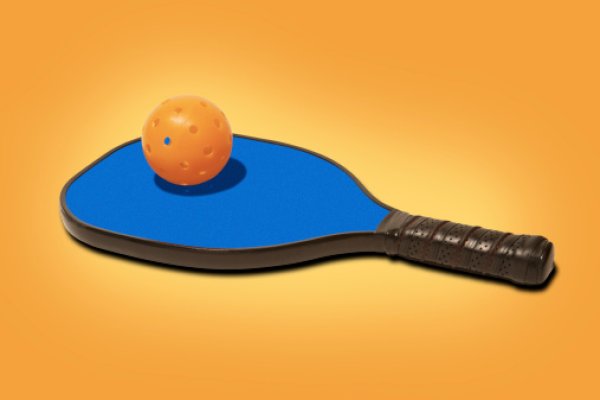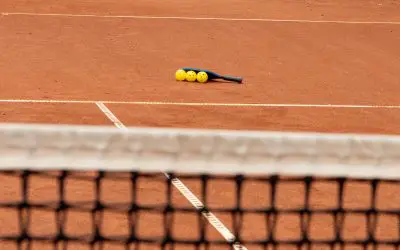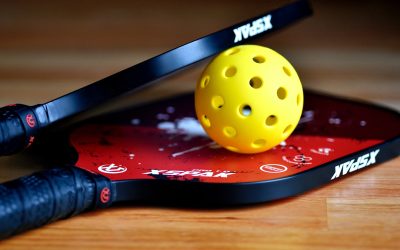If you’re relatively new to pickleball, or even if you’ve been playing for several years, understanding the rules and objects of the game can be challenging. In particular, one of the most unique aspects of pickleball is its non-volley zone. Also known as “The Kitchen,” which can endlessly confuse players, both old and new.
While this feature of Pickleball may appear daunting at first glance, it’s quite simple when you understand it and how to use it properly in your game strategy. The non-volley zone is the seven-foot space on each side of the net directly adjacent to it.
This court area is often referred to as “The Kitchen.” The pickleball kitchen rules state that players are not allowed to volley (hit the ball before it bounces on their side of the court) in this area. instead, they must let the ball bounce first and then hit it.
This rule keeps the play from becoming too aggressive or fast-paced. The non-volley zone can be a great way for beginners to keep up with more experienced players. As a rule, it keeps the speed of play consistent. This blog post will explore what makes up Pickleball’s Non-Volley Zone, “The Kitchen,” why it exists in the first place, and how you can succeed during gameplay by taking advantage of its boundaries!
No Volleys In The Kitchen Area
Volleying the pickleball involves hitting it before it bounces on the ground. No “volley” contact can be made within the Non-Volley Zone or its boundary, “The Kitchen” line. The Non-Volley Zone is the area within 7 feet of the net on both sides.
A pickleball shot known as a volley is executed without the ball touching the ground, and is hit inmidair. The Non-Volley Zone is a specific area on the pickleball court where volleying a pickleball is not allowed. This non-volley zone rule ensures that new players have time to learn the game and get used to hitting the ball before worrying about dealing with volleys. Once players have mastered the basics of the game, they can move on to playing in the volley zone and adding this element to their game.
Volleying the pickleball (striking it without allowing it to bounce) is illegal if the player has contact with the Non-Volley Zone (or anything touching it) occurs at any point during this process. Regardless of whether or not their opponent returns the hit and the ball bounces, a point is lost if a player strikes within the Non-Volley Zone.
What Is Allowed In The Non-Volley Zone?
As mentioned above, it is not allowed to volley the pickleball while touching the Non-Volley Zone. This means that players cannot hit the pickleball without it bouncing first, as doing so would give them an unfair advantage. Players must let the pickleball bounce before hitting it. Otherwise, they will be violating the game’s rules.
You can volley the pickleball outside the Non-Volley Zone.
Volleys Outside The Non-Volley Zone
Volleying is not allowed in the Non-Volley Zone, but players can volley elsewhere on the pickleball court. Volleying is a common and important part of the game. Take advantage of the opportunity when you’re not in the Non-Volley Zone. You can hit a volley anywhere on the court besides the Non-Volley Zone. Such as at the baseline and between the baseline and Non-Volley line.
Hitting a volley in the air is allowed even in the Non-Volley Zone. You can contact the pickleball by extending your arm over the Non-Volley Zone line and making contact with the ball above the court’s surface while in mid-air. If you hadn’t touched the Non-Volley Zone or interacted with anything in contact with it, you wouldn’t have been at fault. The Non-Volley zone is a special area where you cannot hit the ball before it bounces.
Difficulties can arise for players when deciding if they have made contact with the Non-Volley Zone or line while playing pickleball on a court. This can be difficult, as players often reach over the line to hit the ball. If you are unsure whether or not you touched the line, it is best to ask one of the other players or a referee.
How To Hit An Erne
The Erne shot, originating from Erne Perry and made popular in competitive play, is a sophisticated maneuver used on the pickleball court. The Erne shot is executed when a player either (1) makes a groundstroke on the pickleball while jumping from within the Non-Volley Zone or (2) after running through or around the Kitchen and re-establishing their feet outside of this area, just to its side.
Erne shots can force opponents to take a precise shot and may lead to mistakes. This will happen if they turn their attention away from the ball and towards your movements on the court. By forcing your opponent to take a precise shot you make them more likely to make mistakes if they are not paying close attention to the ball. If they are focused on your movements instead of the ball, it creates an opportunity for you to score.
Conclusion
The term “non-volley zone” in pickleball can confuse newcomers. This zone is an area on the court where players cannot hit a volley shot. If the opponent hits the ball while inside this zone, it can result in a point for their opponents.
The purpose of the non-volley zone is to give players time to get back to the baseline. It also set up defensively before hitting another shot. With this “kitchen” rule in place, games tend to last longer and are more competitive overall. It also allows players to practice their defensive skills and helps them become better pickleball players.
Understanding the non-volley zone is essential for any pickleball player looking to take their game to the next level. In addition to understanding the non-volley zone, there will be several other important strategies that every pickleball player should be aware of.














0 Comments